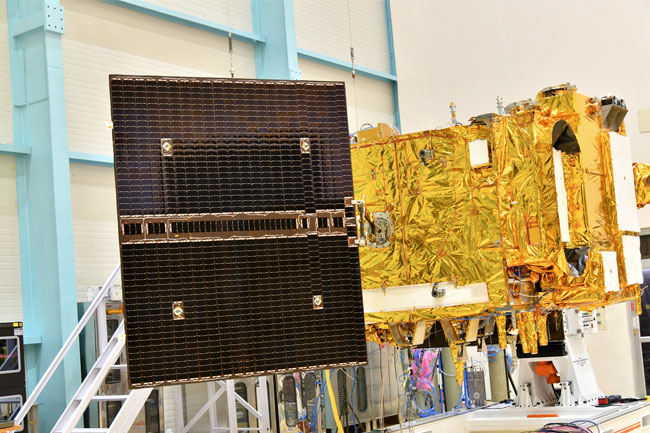After moon, ISRO aims for the Sun with its Aditya-L1 mission
August 27, 2023 04:17 pm
After successfully landing spacecraft on the moon’s South Pole, India is now aiming for the Sun. The Indian Space Research Organisation (ISRO) is now gearing up for its maiden solar mission, Aditya-L1. ISRO chief S Somanath on Saturday shared major updates on the mission, saying that Aditya-L1 is ready and will be launched in the first week of September.
“We are planning to launch in the first week of September,” said ISRO chairman S. Somanath.
On August 14, Aditya-L1’s satellite arrived at Satish Dhawan Space Centre (SDSC-SHAR) in Sriharikota from UR Rao Satellite Centre (URSC) in Bengaluru, where it was developed. ISRO shared the update on X (formerly Twitter).
Initially, Aditya-L1 was slated to launch on August 26, but as per the latest update, the mission will now be launched in the first week of September.
What Aditya-L1’s mission is all about?
Aditya-L1 will be India’s first space-based mission to study the Sun. The spacecraft of Aditya-L1 will be placed in a halo orbit around the Lagrange Point 1 (L1) of the Sun-Earth system, which is about 1.5 million km from the Earth.
Lagrange Points are positions in space where the gravitational forces of a two-body system the Sun and Earth produce enhanced regions of attraction and repulsion. These points are used by spacecraft as ‘parking spots’ in space to remain in a fixed position with minimal fuel consumption.
It aims to study solar winds, which can cause disturbance on Earth and are commonly seen as “auroras”.
When will Aditya-L1 mission be launched?
The satellite is ready and has already reached Sriharikota, but the final date for the launch of Aditya-L1 will be announced in two days, ISRO chief S Somanath has said.
The event is expected to take place in the first week of September, with the space agency targeting a September 2 launch.
What are the objectives of Aditya-L1?
With Aditya-L1, ISRO aims to observe solar activities more closely and their effect on space weather in real-time. The mission will study the solar upper atmospheric dynamics of the corona and chromosphere.
The spacecraft will carry seven payloads to observe the photosphere, chromospheres and the outermost layers of the Sun using electromagnetic particle and magnetic field detectors.
Using the special vantage point L1, four payloads directly view the Sun and the remaining three payloads carry out in-situ studies of particles and fields at the Lagrange point L1, thus providing critical scientific studies of the propagatory effect of solar dynamics in the interplanetary medium.
--Agencies












